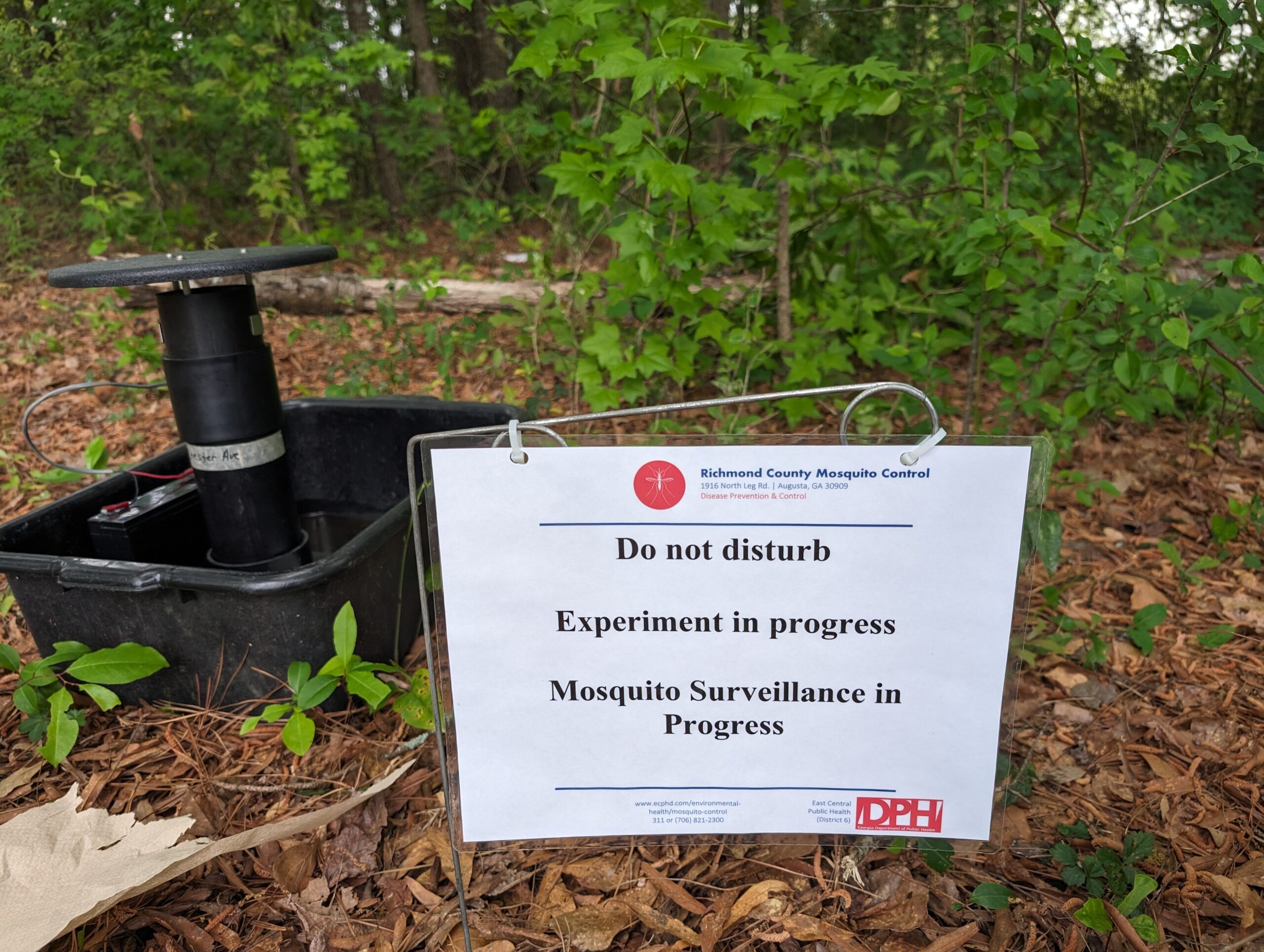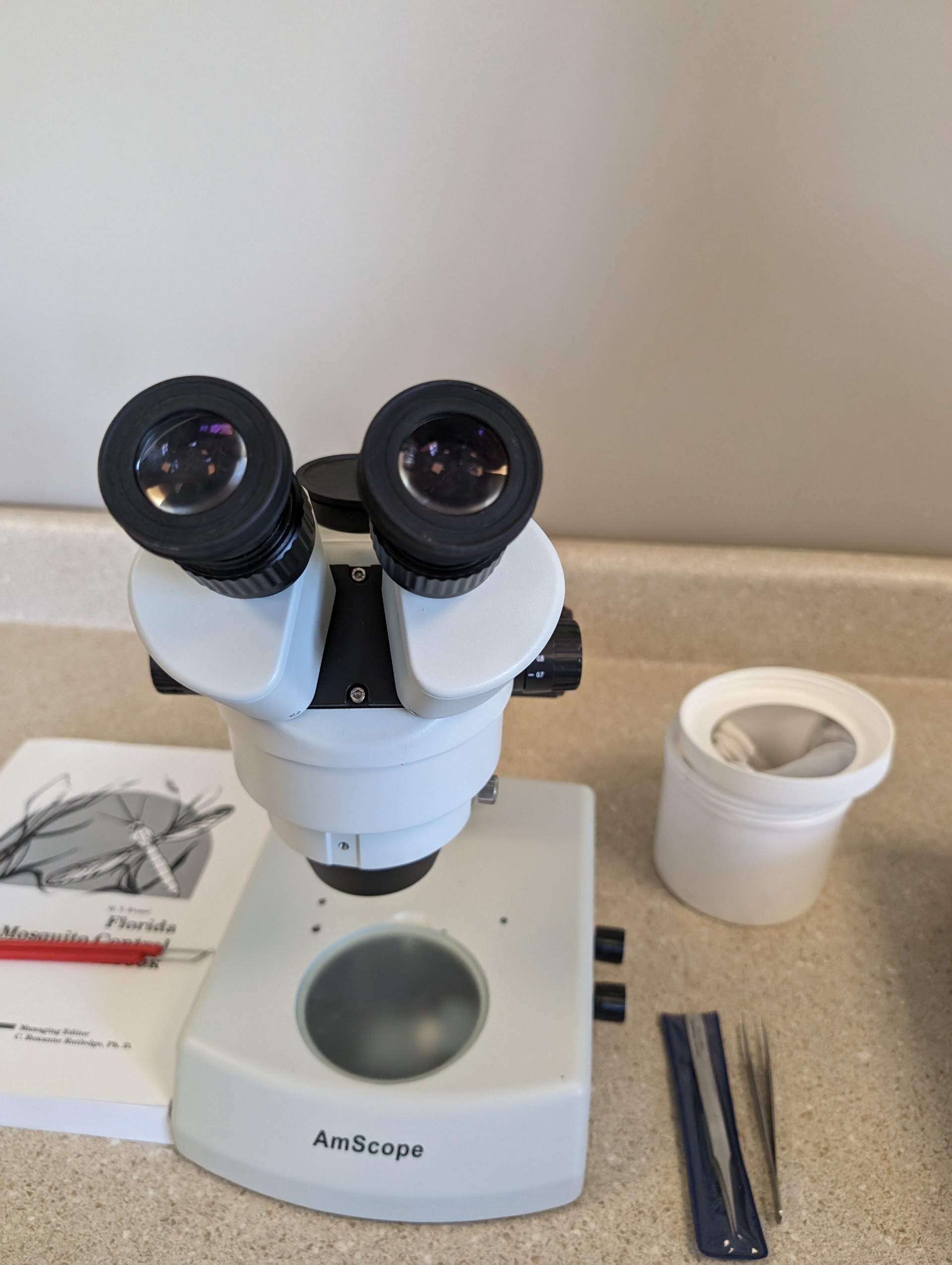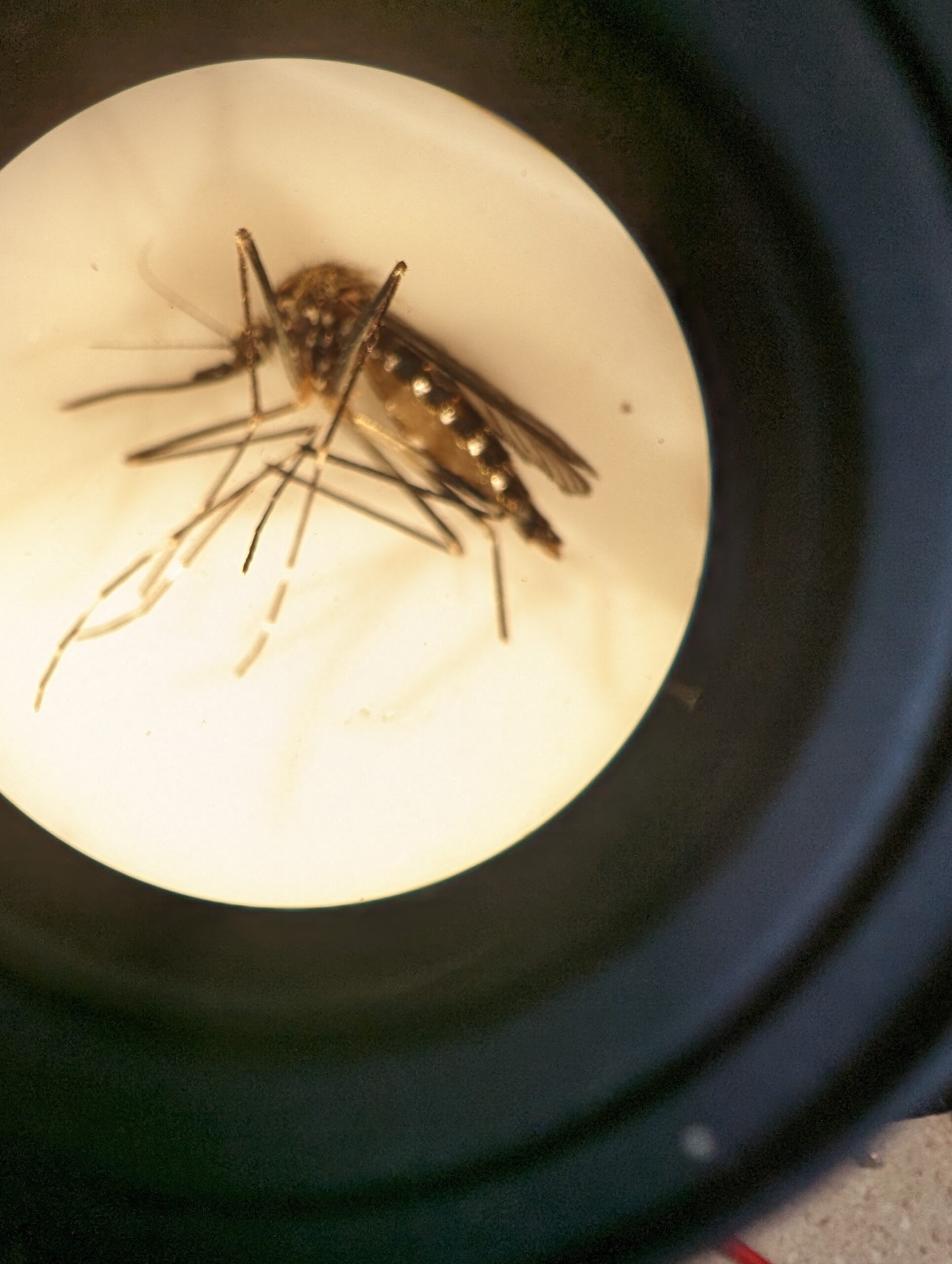VECTOR SURVEILLANCE
We keep records of the mosquito activity in Richmond County. Richmond County Mosquito Control sets traps at 16 sites spread out across the county to collect the following data:
- How big is the population size of mosquitoes in the area?
- What species are present? Do they spread disease?
- Are mosquitoes looking for blood meals or laying eggs?
- What parts of Richmond County have higher or lower numbers of mosquitoes?
- Our traps are not a control measure – they are to sample the mosquitoes flying nearby.
We place the mosquitoes we catch under a microscope and identify them
- We use this information to make educated decisions about mosquito management needs throughout the county and to help us assess disease and bite risk!
- Feel free to look at our traps that we put out in the community, but please inform others and know yourself that they need to remain undisturbed to do their job and catch the mosquitoes that are in the area.
How do we trap mosquitoes?
- We use two types of traps – one to catch host-seeking mosquitoes and one to catch mosquitoes who have taken a blood meal and are seeking to lay their eggs.
- We place our traps in 16 different sites across Richmond county twice each month, and also set traps in other counties in our district once each mosquito season.
- We set our traps year round to document mosquito populations.









